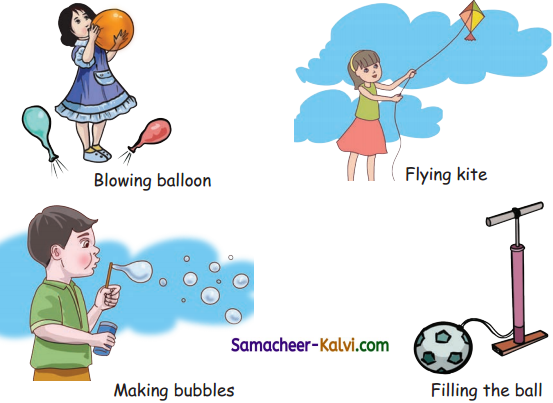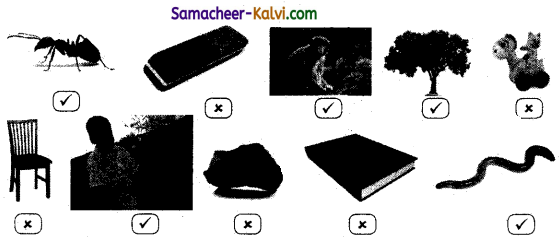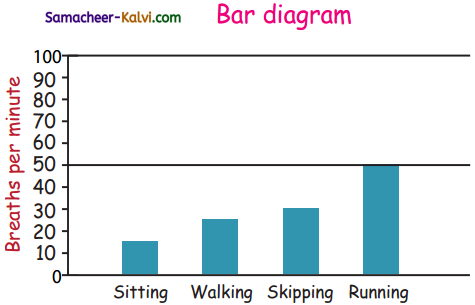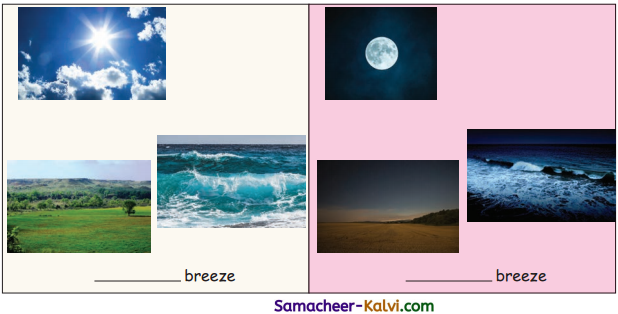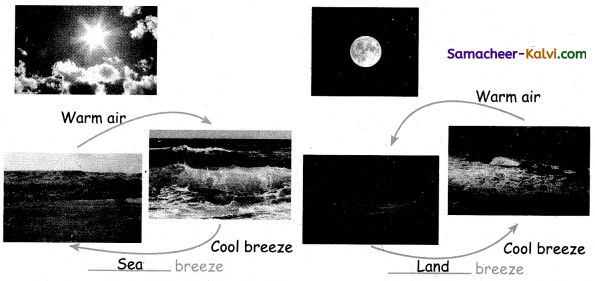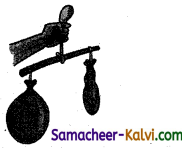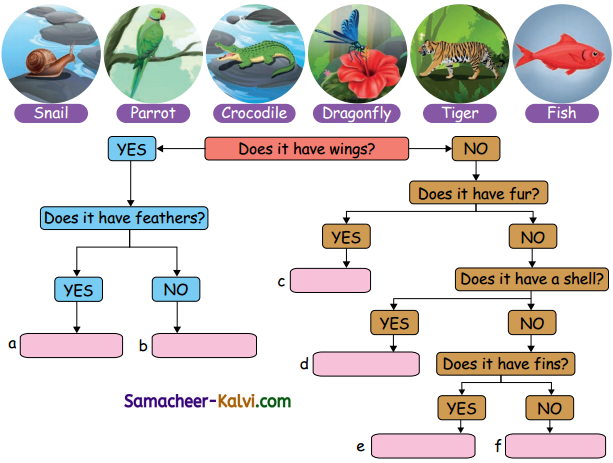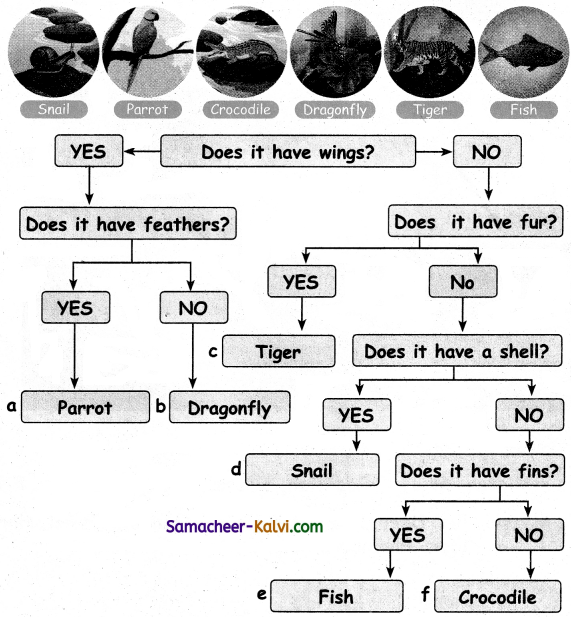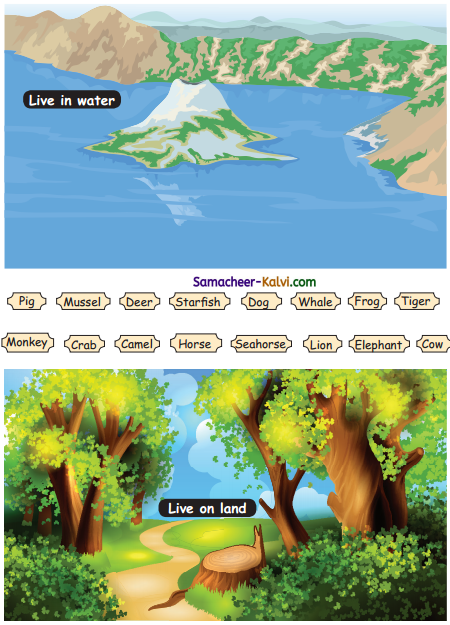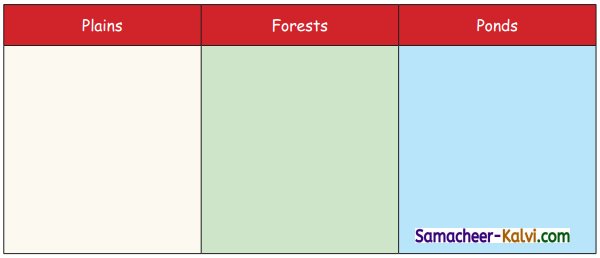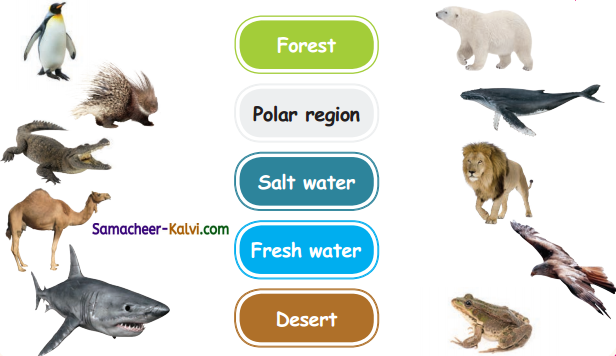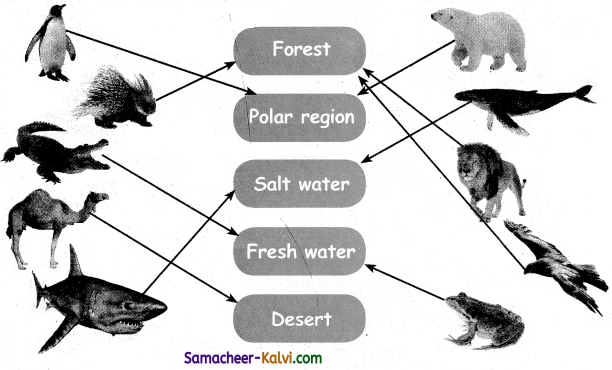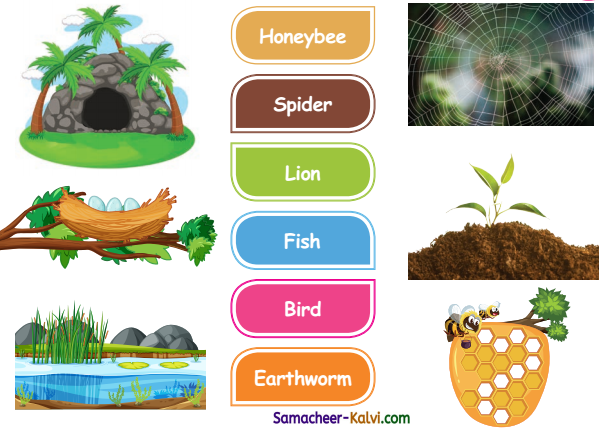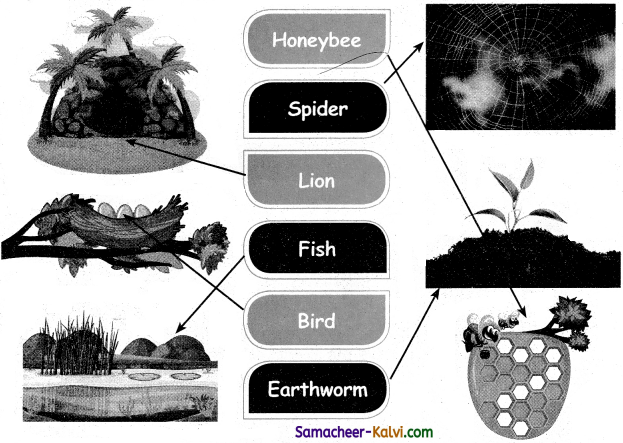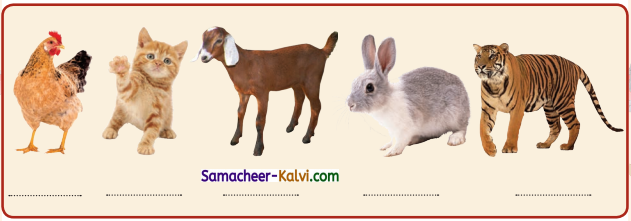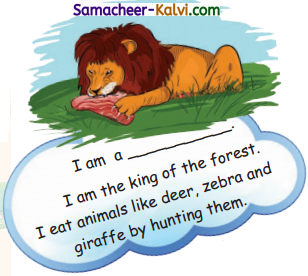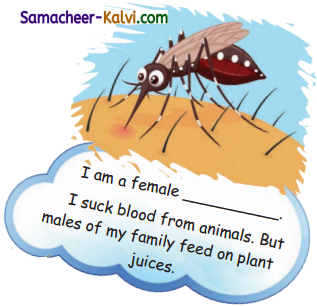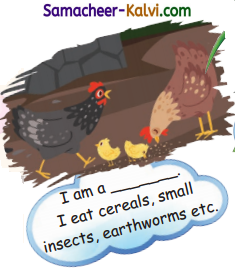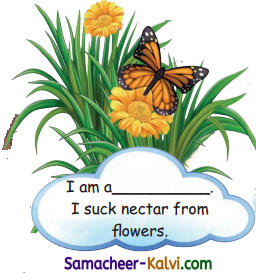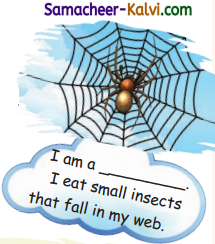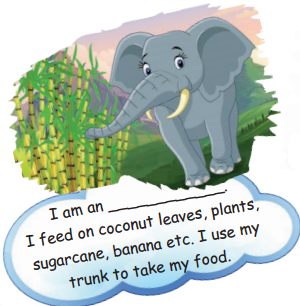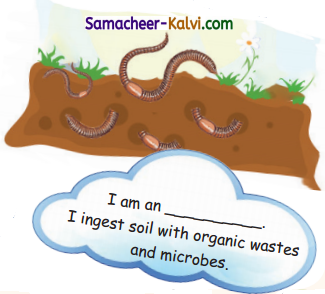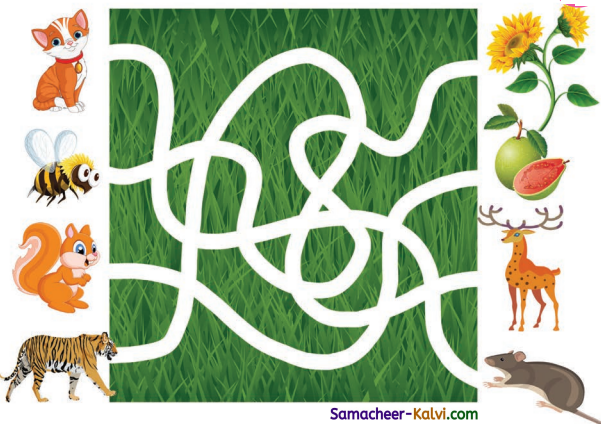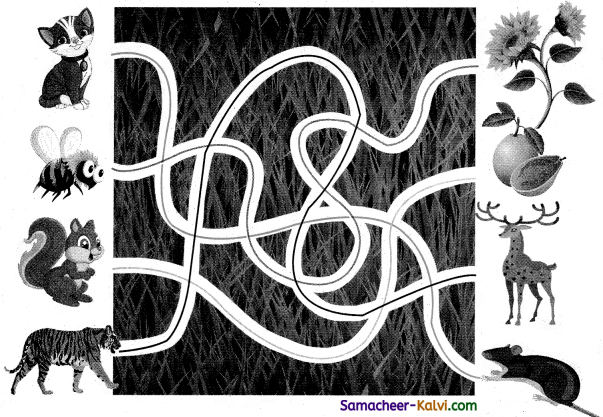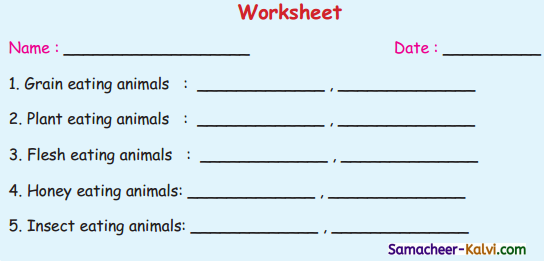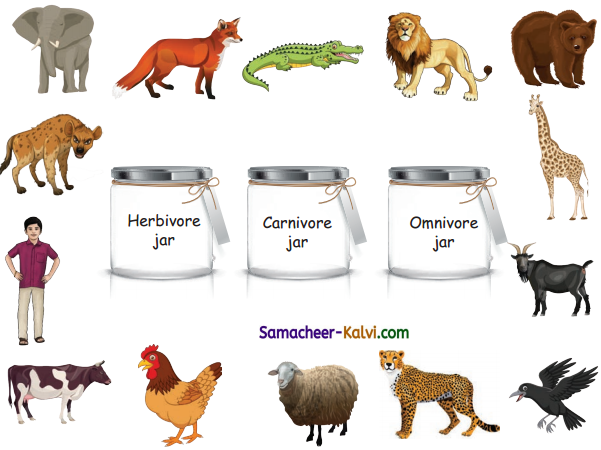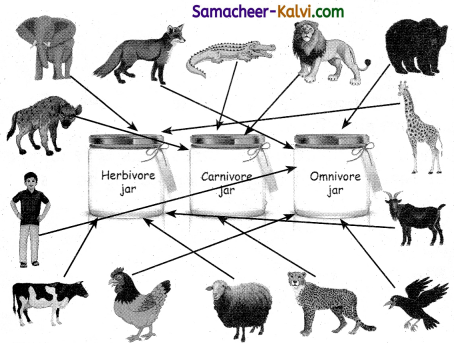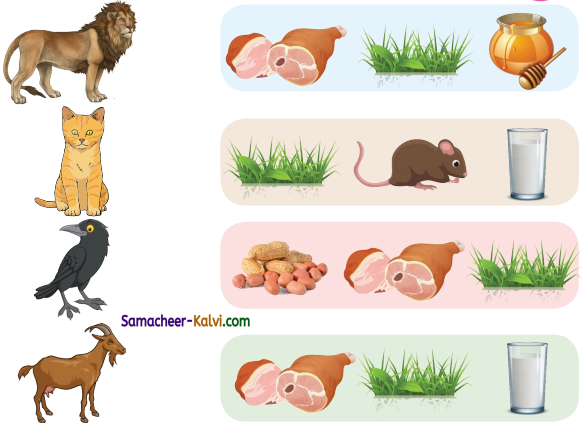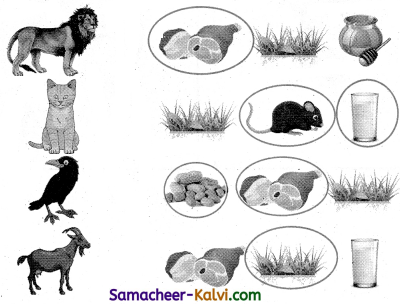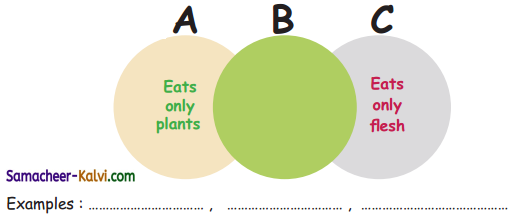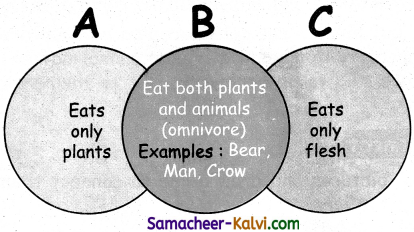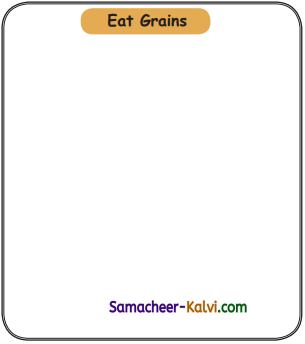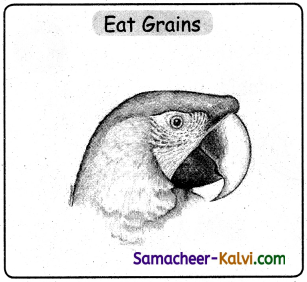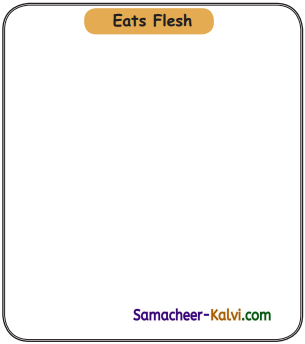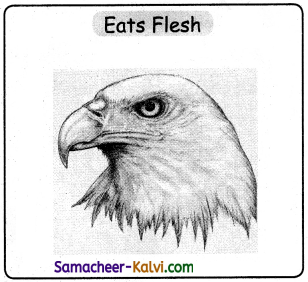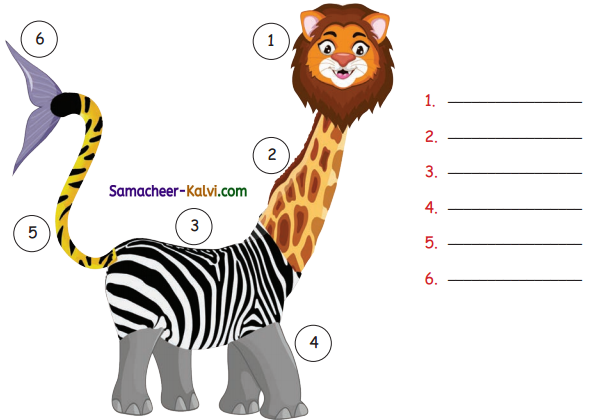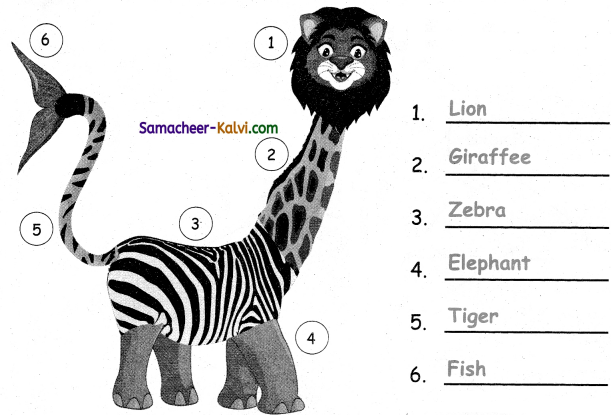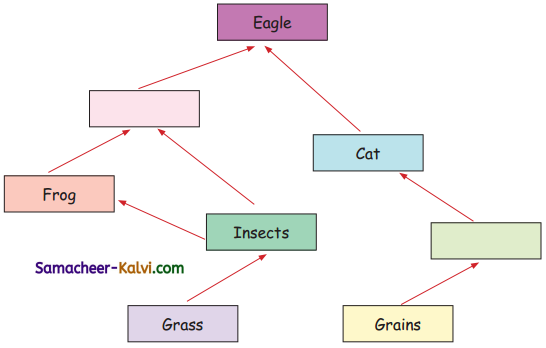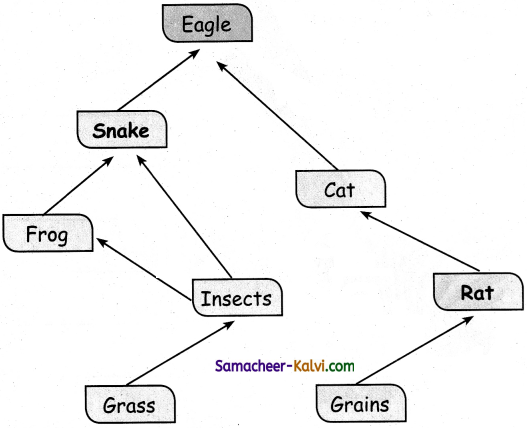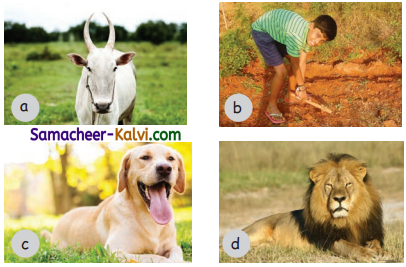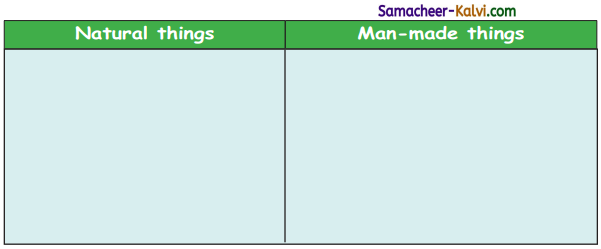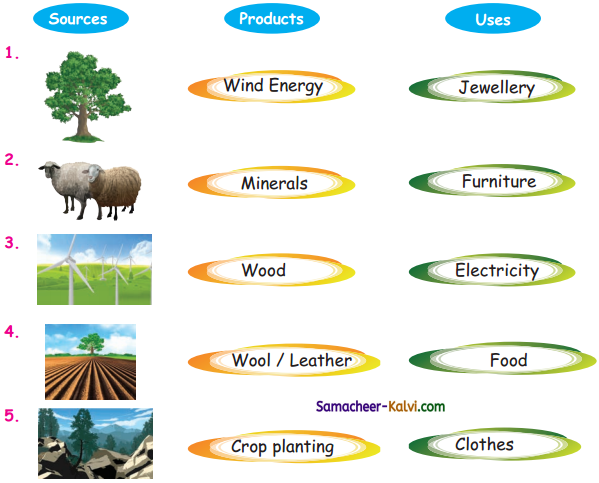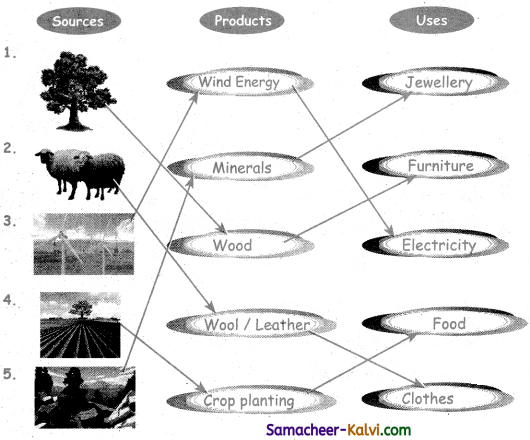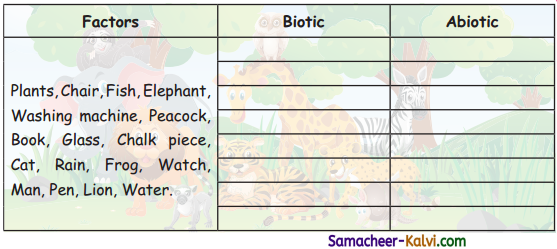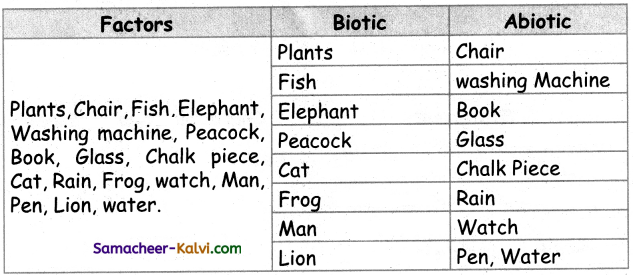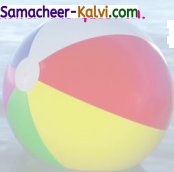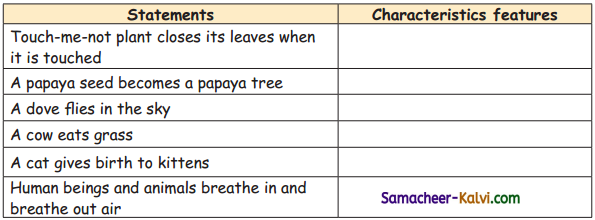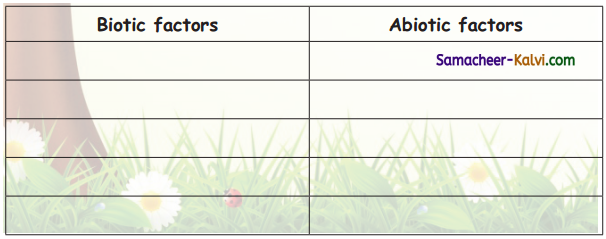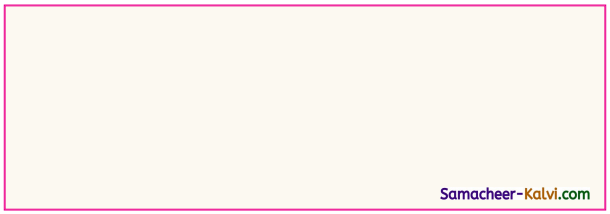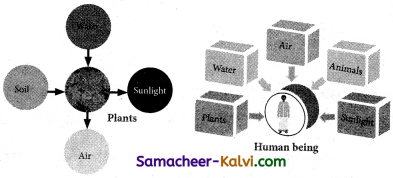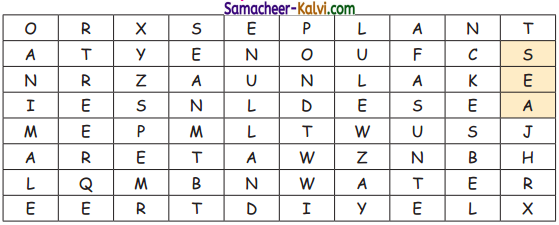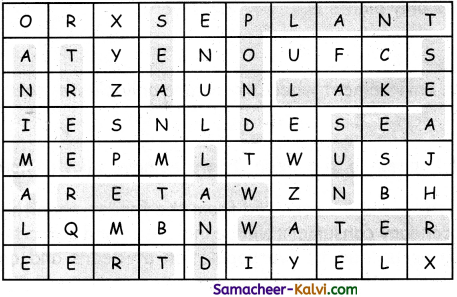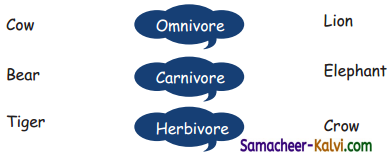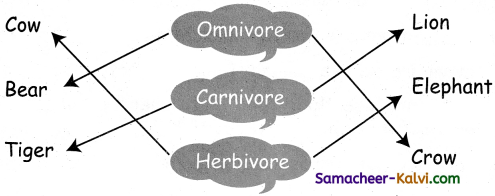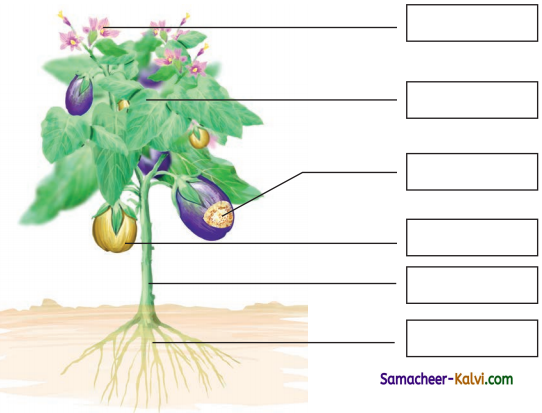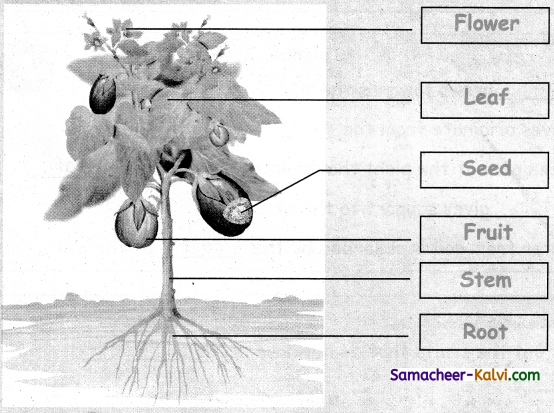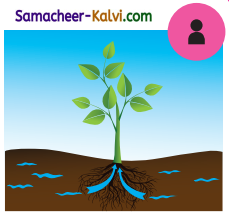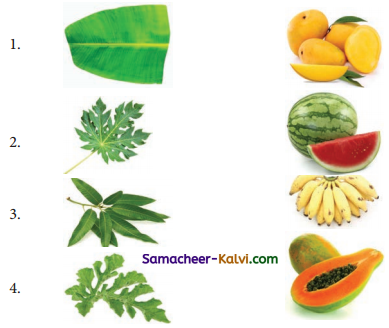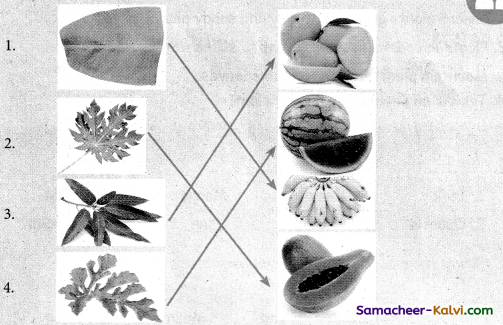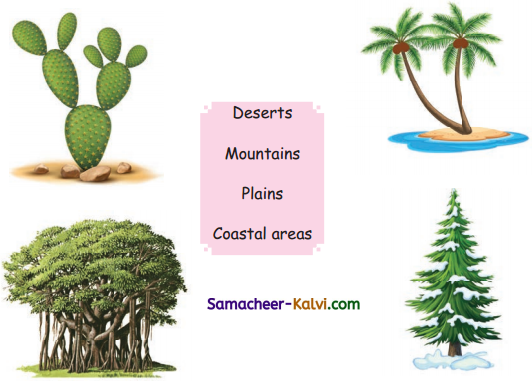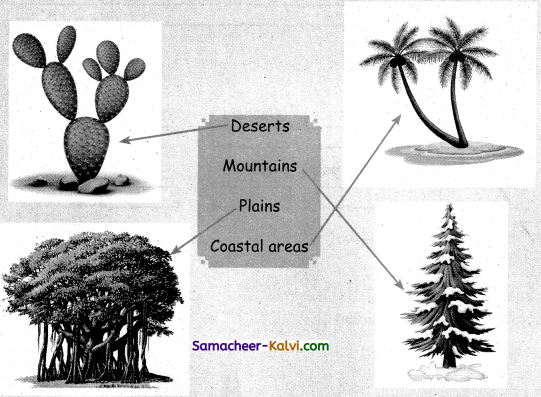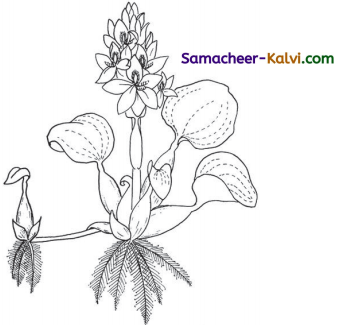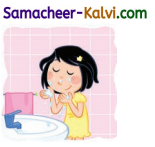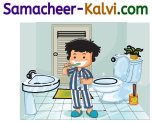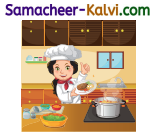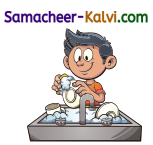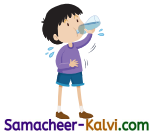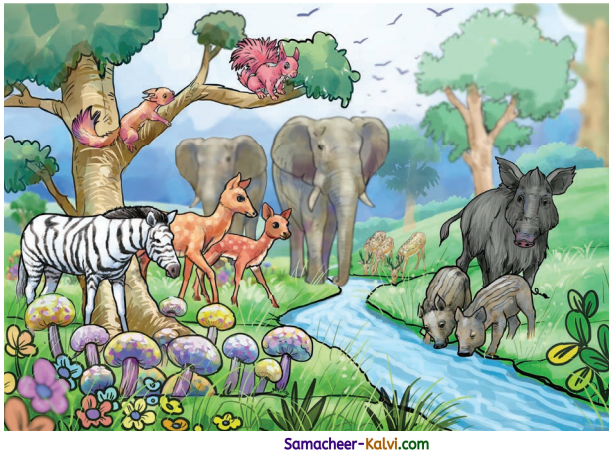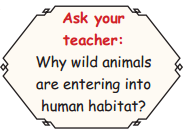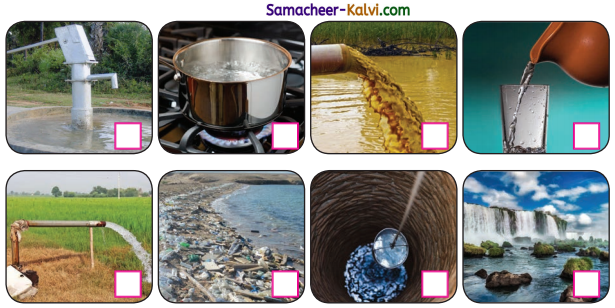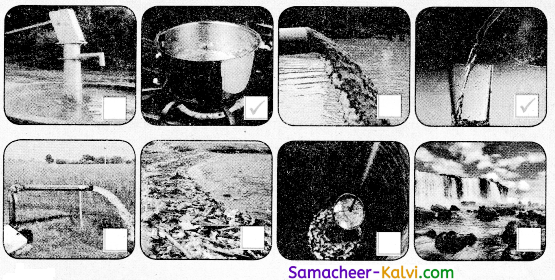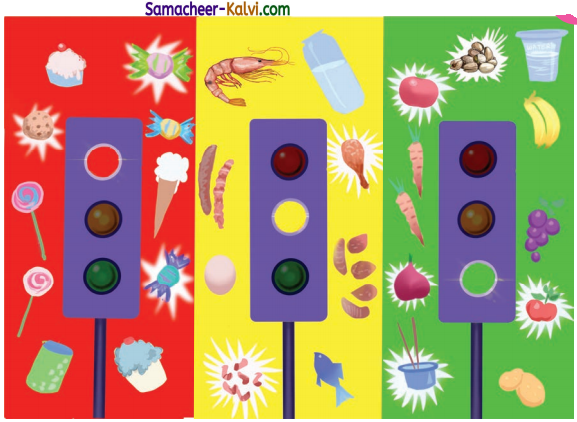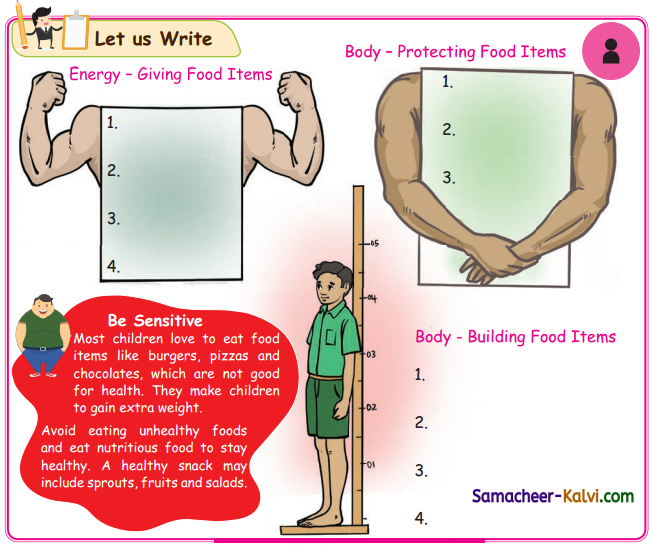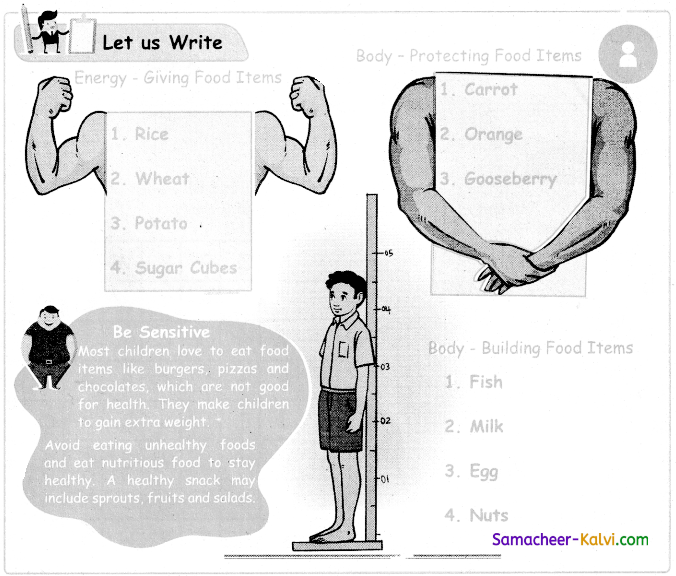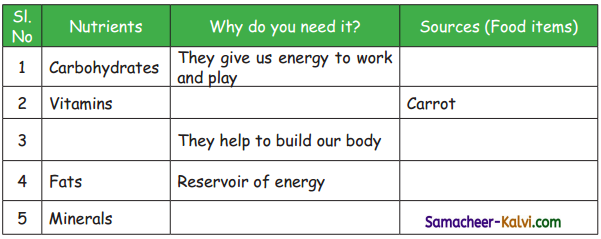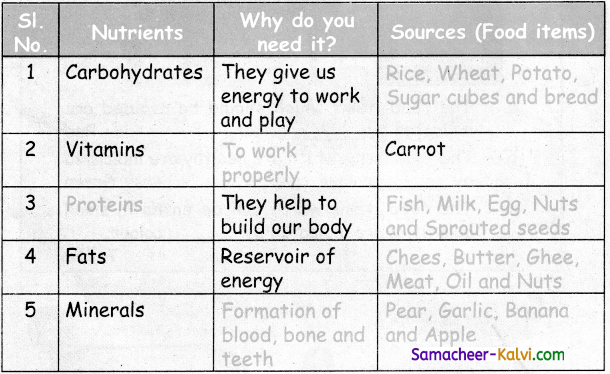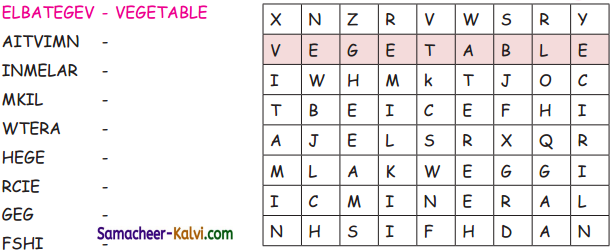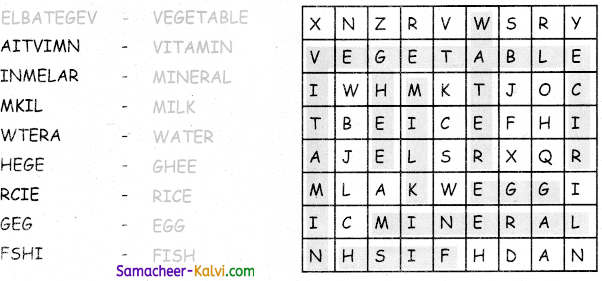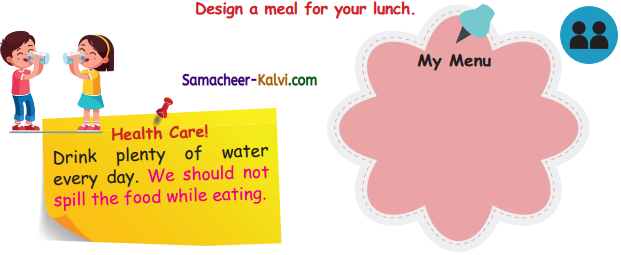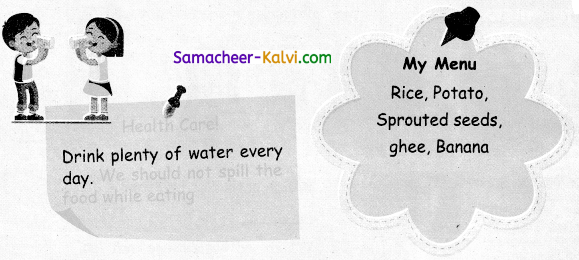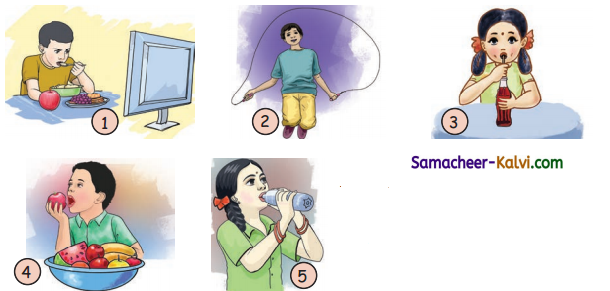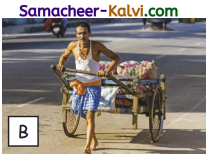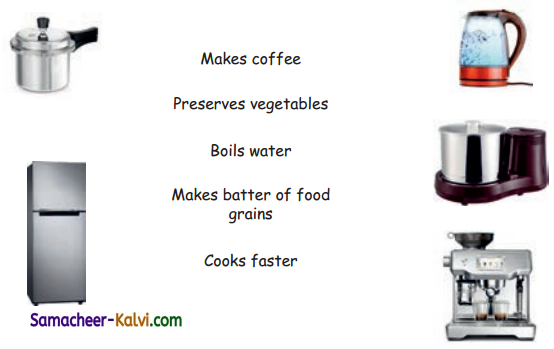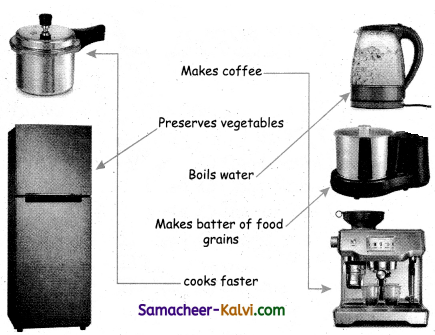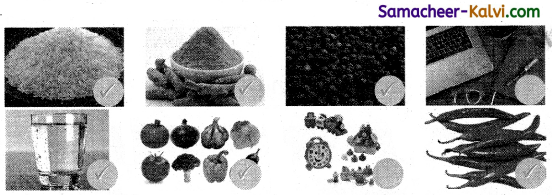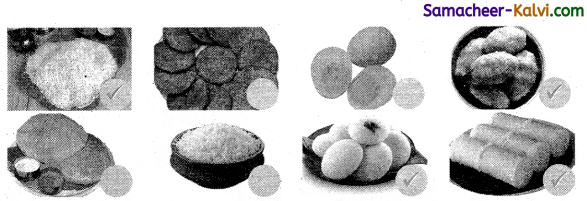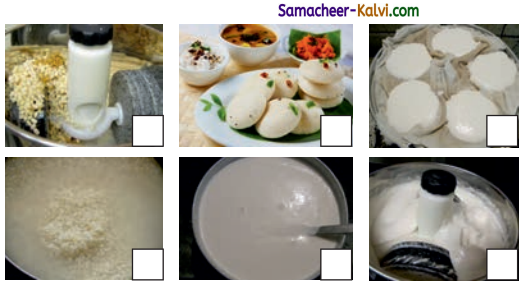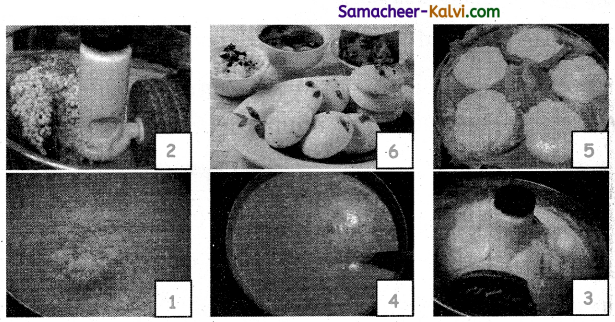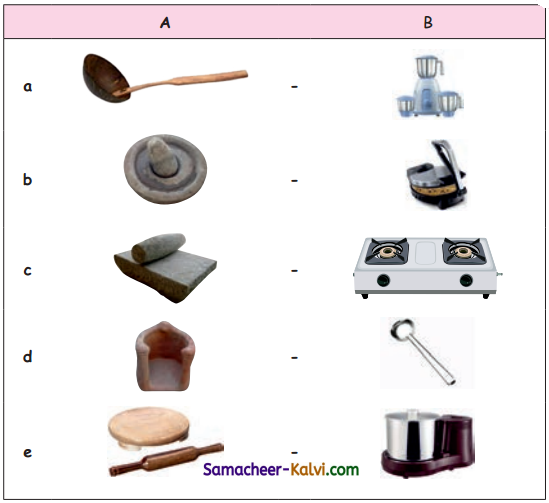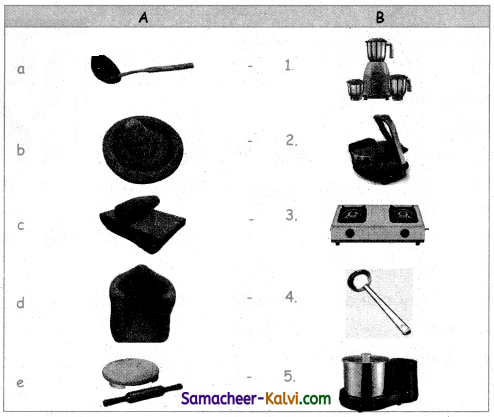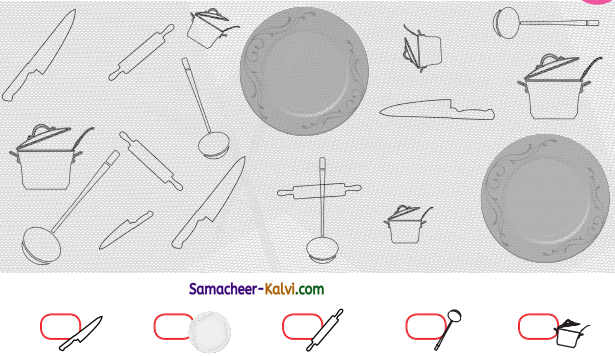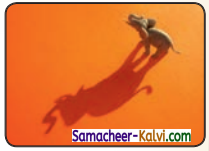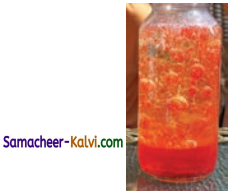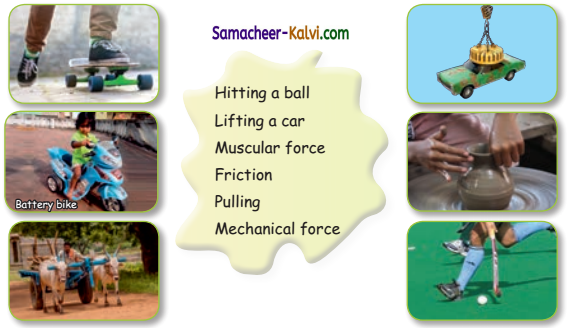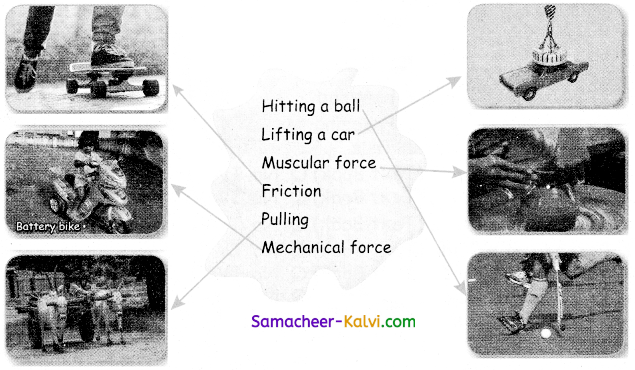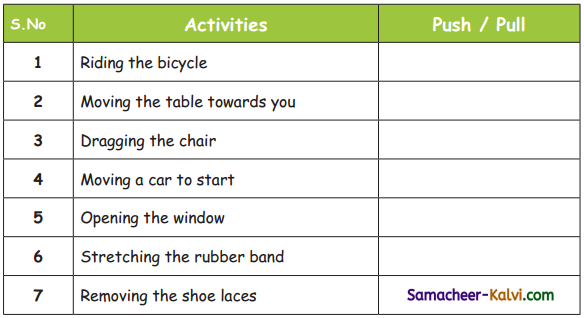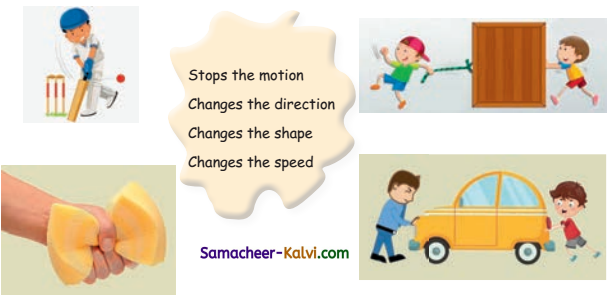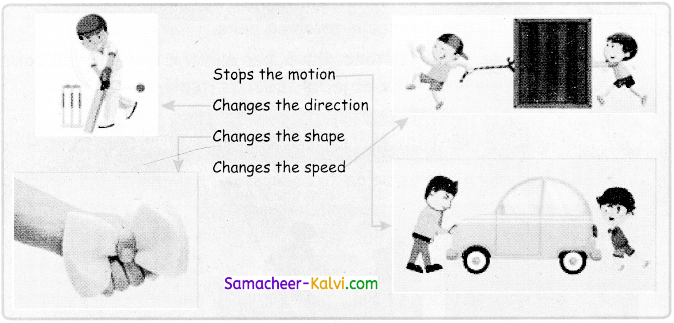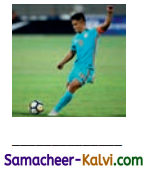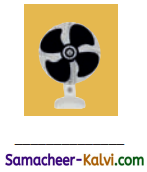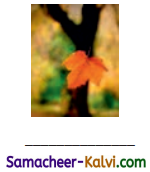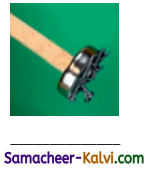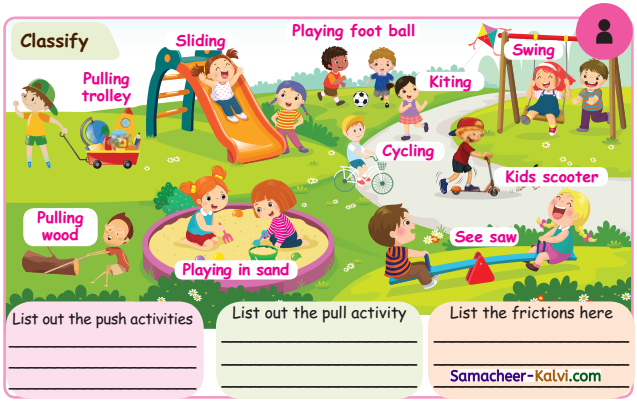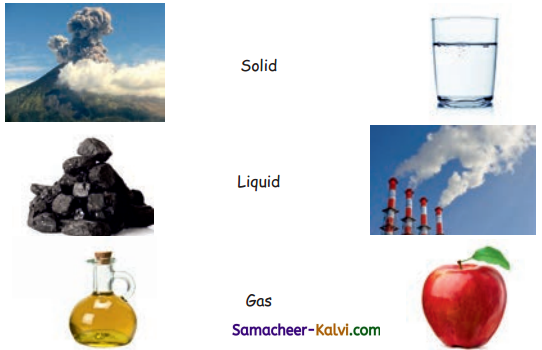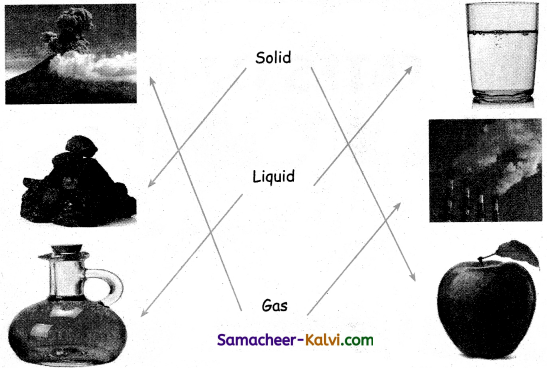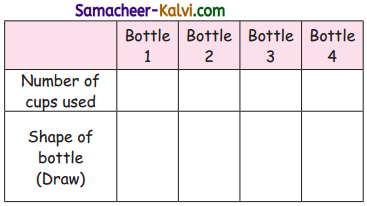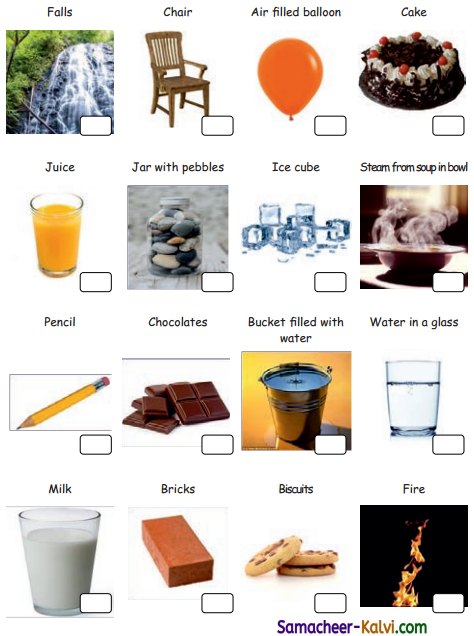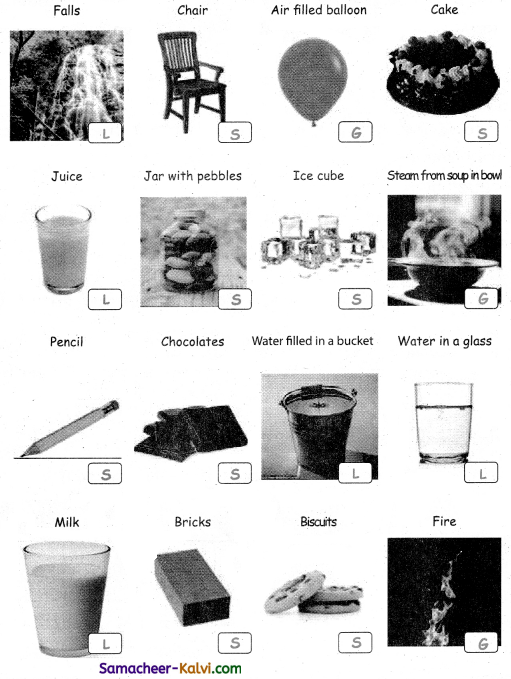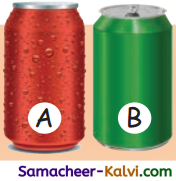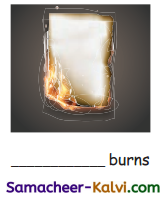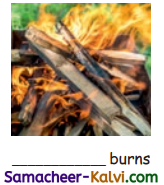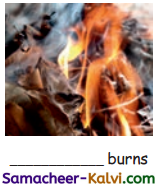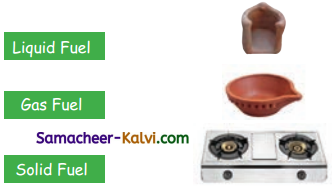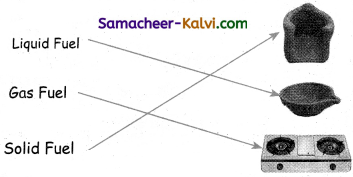Samacheer Kalvi 3rd Standard Social Science Book Solutions Term 1 Chapter 1 Family
I. Choose the correct answer:
Question 1.
The basic unit of the society is ________.
a) village
b) town
c) family
Answer:
c) family
Question 2.
________ is one of our basic needs.
a) Sofa
b) Shelter
c) Car
Answer:
b) Shelter
Question 3.
Father, mother and children live together is called __________.
a) small family
b) big family
c) joint family
Answer:
a) small family
Question 4.
________ is the best cultural value of Tamilians.
a) Hospitality
b) Celebrating festivals
c) Going to temple
Answer:
a) Hospitality
Question 5.
Running the family by preparing ________ is the best way to improve economy.
a) wealth
b) money
c) budget
Answer:
c) budget
![]()
II. Match the following.
| 1. Character | a. should live in unity |
| 2. Sharing work | b. uncle |
| 3. Maternal relation | c. vegetable vendors |
| 4. Outsiders | d. improve relationships |
| 5. Neighbours | e. respect |
Answer:
| 1. Character | a. respect |
| 2. Sharing work | b. should live in unity |
| 3. Maternal relation | c. uncle |
| 4. Outsiders | d. vegetable vendors |
| 5. Neighbours | e. improve relationships |
![]()
III. True or False.
Question 1.
A family fulfills all our basic needs.
Answer:
True
Question 2.
Our neighbours are our relatives.
Answer:
False
Question 3.
Our economy improves when expenditure exceeds income.
Answer:
False
Question 4.
We must keep our things in their respective places.
Answer:
True
Question 5.
Simplicity is the best policy for every family
Answer:
True
![]()
IV. Answer the following.
Question 1.
Name the types of families.
Answer:
- Small family or nuclear family
- large family or extended family
- Joint family.
Question 2.
What do you mean by joint family?
Answer:
Two or three generations live together. This type of family is called a Joint family.
![]()
Question 3.
What are the values that we learn from our family?
Answer:
Affection, Respect, Protection, Sharing.
Question 4.
Who are our neighbours?
Answer:
Many families live near our home. We call them neighbours.
Question 5.
Write a note on ‘Budget’.
Answer:
Income and Expenditure is important for any family. We must spend according to our income. Basic needs should be fulfilled first. We must act according to the budget system.
![]()
Project work:
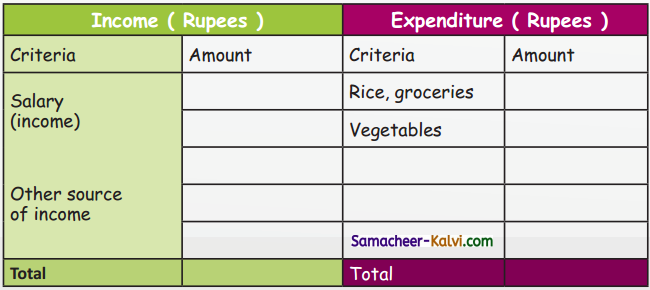
Question 1.
Income and Expenditure are same
Answer:
✗
Question 2.
Income is more than expenditure
Answer:
✓
Question 3.
Income is lesser than expenditure
Answer:
✗
![]()
Let us Write (Text Book page No. 145):
Question 1.
List out the names of your Maternal relations and Paternal relations of your family.
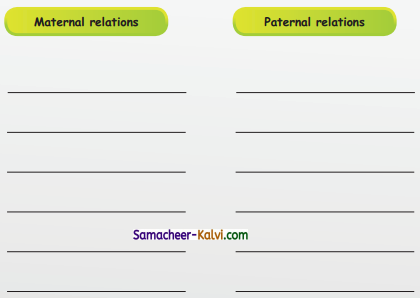
Answer:
| My Maternal relatives | My Paternal relatives |
| Grand Mother | Grand Mother |
| Grand Father | Grand Father |
| Uncle | Uncle |
| Aunt | Aunt |
![]()
Think (Text Book page No. 146):
Question 1.
Have you seen families with two or three generations living together in your area?
Answer:
No, I have never seen such familes having two or three generations living together in my area.
Activity (Text Book page No. 147):
Question 1.
List out the other values that bind the family members together.
Answer:
Tolerance, Forgiveness, Kindness, Helping to others.
![]()
Think Zone (Text Book page No. 148):
Question 1.
How do you manage your things? Discuss with your friend.
Answer:
- I use my things when ever I need.
- I always use them carefully.
- I use minimum things for my needs.
Question 2.
How do you call your relations?
Answer:
- Mothers mother – Grand Mother
- Father’s father – Grand Father
- F ler’s sister – Aunt
- Mother’s brother – Uncle
Question 3.
How should you behave when the relatives come?
Answer:
- I welcome my relatives with love.
- I give water to welcome home.
- I converse some time with them.
- I spend my time with them.
![]()
Activity Let us find (Text Book page No. 149):

Answer:
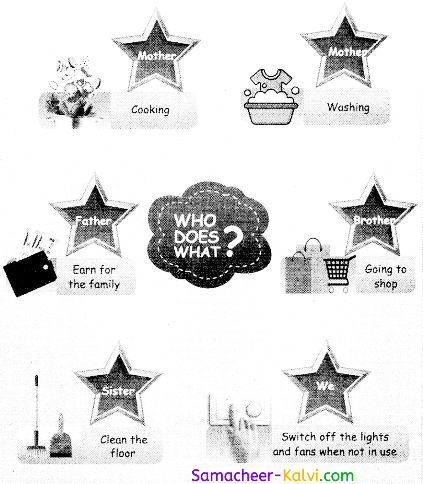
![]()
Think Zone (Text Book page No. 151):
Question 1.
Is there any pet animal in your house?
Answer:
Yes, I have a cat as my pet animal.
Question 2.
Before lying any object, have you ever thought of its necessity?
Answer:
Yes, I think about the necessity of the object, before I buy it.
![]()
Question 3.
How many members in your family earn for livelihood?
Answer:
My father and mother both of them earn for our livelihood.
Question 4.
Do you save money?
Answer:
Yes, I save little money which get from my parents.
![]()
3rd Standard Social Science Guide Family Additional Questions and Answers
I. Choose the correct answer.
Question 1.
People who are related through our mother are called________ relations.
a) Maternal
b) Paternal
c) public
Answer:
a) Maternal
Question 2.
Two or three generations live together. This type of family is called a __________.
a) small family
b) big family
c) joint family
Answer:
c) joint family
Question 3.
___________ fulfill our basic needs like food, dress and shelter.
a) Village
b) Family
c) Town
Answer:
b) Family
Question 4.
__________ crisis occur when expenditure exceeds income.
a) Economic
b) Society
c) Family
Answer:
a) Economic
Question 5.
__________ helps us to feel safe and secure.
a) Village
b) Town
c) Family
Answer:
c) Family
![]()
II. Match the following:
| 1. Small family | a. two or three ganerations |
| 2. Large family | b. protection |
| 3. Joint family | c. milk man |
| 4. Values | d. extended family |
| 5. Outsiders | e. nuclear family |
Answer:
| 1. Small family | a. nuclear family |
| 2. Large family | b. extended family |
| 3. Joint family | c. two or three ganerations |
| 4. Values | d. protection |
| 5. Outsiders | e. milk man |
![]()
III. True or False.
Question 1.
Basic unit of the society is family.
Answer:
True
Question 2.
Town helps us to feel safe and secure.
Answer:
False
Question 3.
Income and Expenditure is important for any family.
Answer:
True
Question 4.
All the members meet during hospitals.
Answer:
False
![]()
IV. Answer the following.
Question 1.
What is family?
Answer:
Father, mother, children, and other close relations live together in a family.
Question 2.
Write the types of relations.
Answer:
The types of relations are
- Maternal relations
- Paternal relations.
Question 3.
What are paternal relations?
Answer:
People who are related through our father are called paternal relations.
